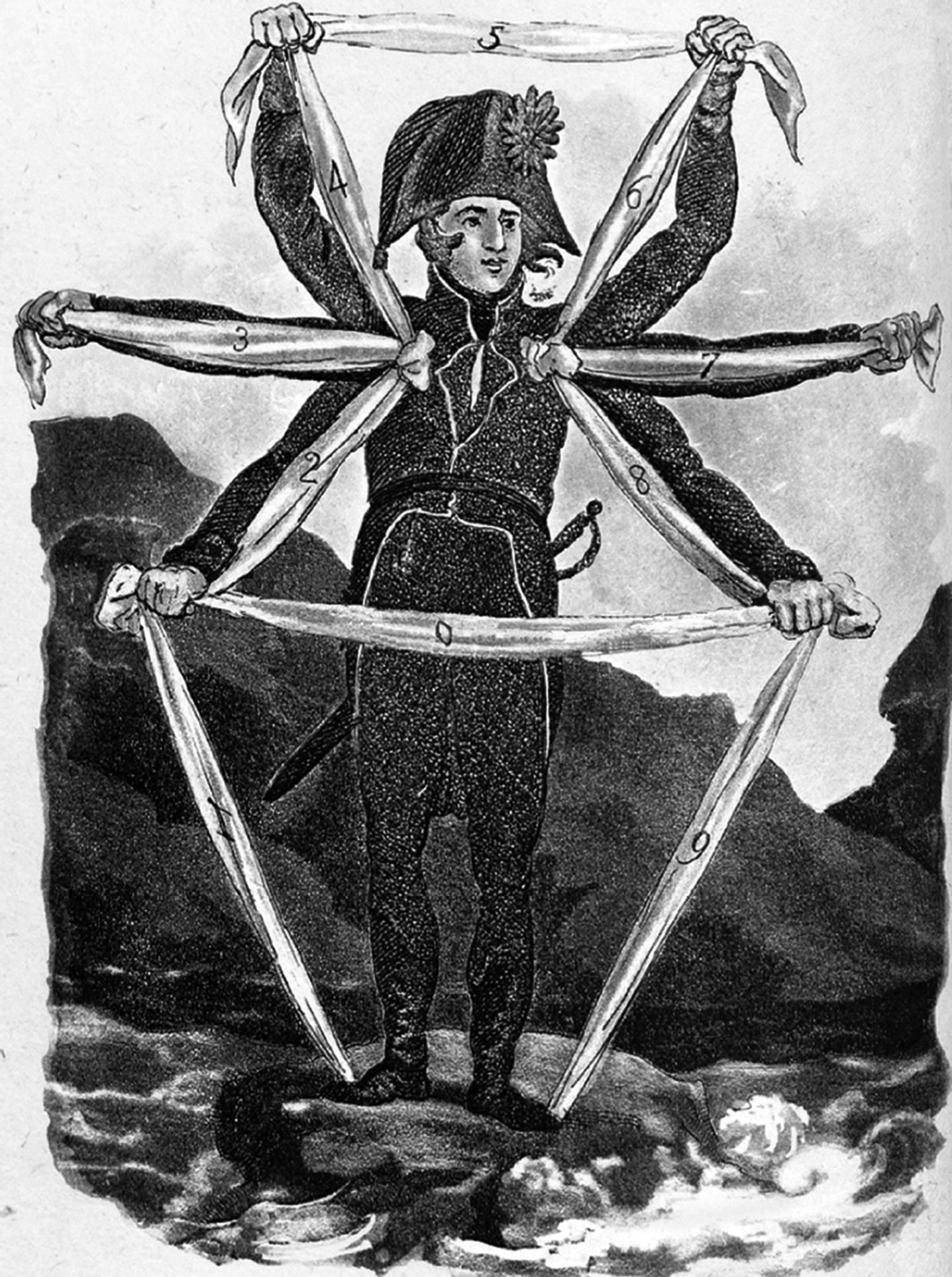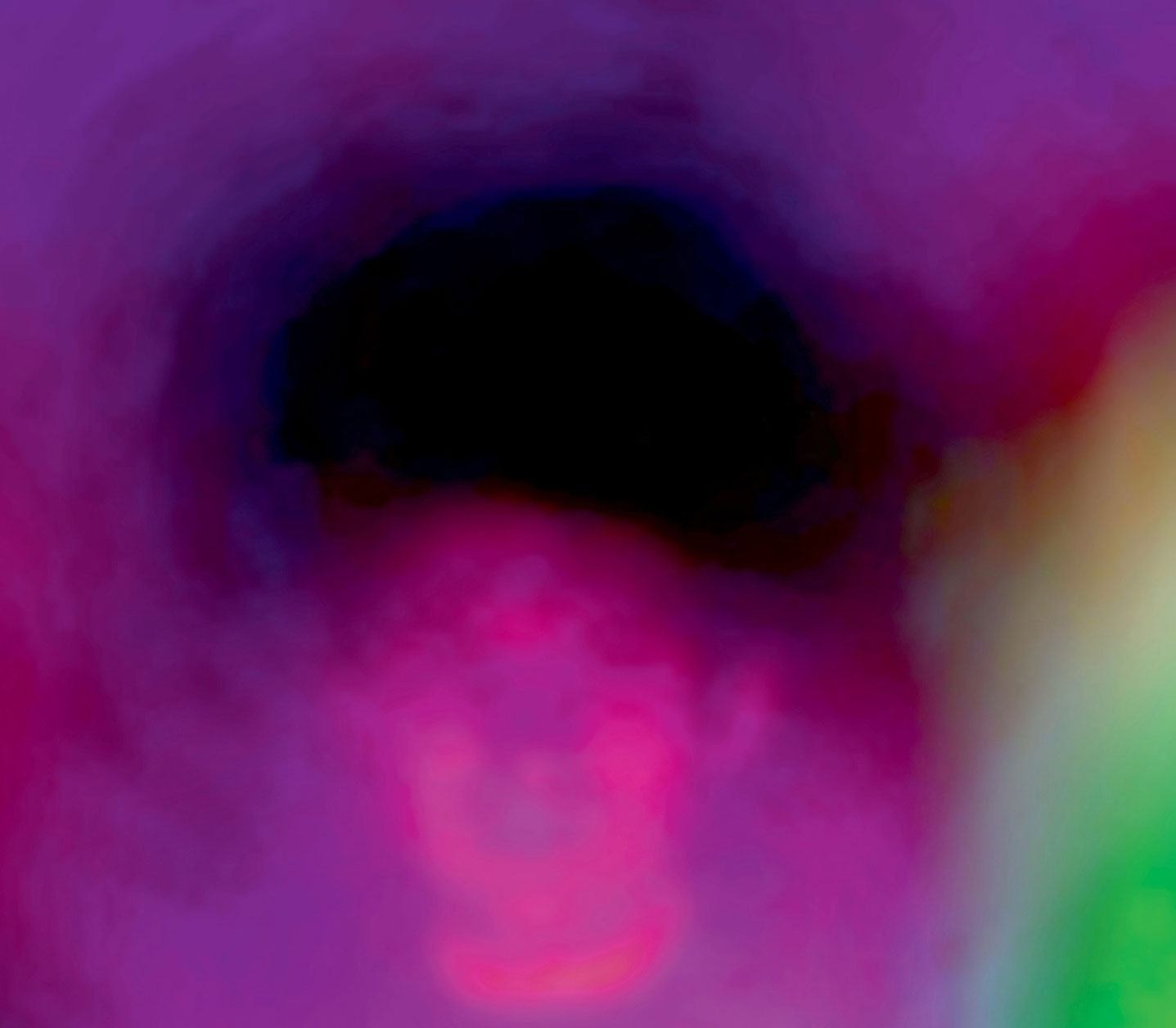Colors / Magenta
At the leaky margins of reality
Sally O’Reilly
“Colors” is a column in which a writer responds to a specific color assigned by the editors of Cabinet.
Magenta House in Whitechapel, London, is one of those late twentieth-century buildings that look like the back of a supermarket, even from the front. But behind this workaday façade, a small team of specialized thinkers called the Qualian Research Group is discreetly frothing with complex ideas on the very nature of reality.
The word qualia refers to a rather intangible philosophical concept, perhaps because it relates to the understanding of understanding itself. Philosophers George Graham and Terence Horgan describe qualia in typically elliptical terms: “For every conscious mental state, there is something it is like for the subject to be in that state or to undergo such an experience.”[1] More simply put, but no doubt lacking in some vital nuance, qualia are thought to occur within the human mind in correspondence to particular external phenomena. And yet they constitute more than sensory data, as they correspond to the internal experience of sensations as well as their external causes. I will curtail my definition of qualia here, as such inquiry requires the spatchcocking of human consciousness, the turning inside-out of causality and epistemology, for which I have neither qualification nor constitution. What concerns us here, rather, is Magenta House itself: a name that, after a little digging, is found to have obscure but particular significance for the qualia debate.
While magenta is a primary process color, it cannot be generated by a single wavelength of light, but is a mixture of red and violet wavelengths. Importantly, red and violet are at opposite ends of the spectrum, so you could say that magenta forms the perceptual bridge of the visible spectrum, creating an illusion of continuity between two extremities. It is this communicative quality of magenta that has attracted the attention of qualiaphiles.
The name magenta was first used in relation to the color shortly after the Battle of Magenta in 1859. Presiding over the French Army there, General Marie Edme Patrick Maurice MacMahon, a Frenchman of Irish decent, deployed the three somewhat-scattered divisions under his command in an attack on the town, marking out its clock, visible above the trees from each battalion’s position, as a rallying point. The following day, in acknowledgement of his agile decision making and successful execution of strategy, MacMahon received a marshal’s baton and the title of Duke of Magenta.
Following his celebrated use of the clock tower as a beacon, the Duke discovered a facility for devising irregular forms of communication, adding to his list of achievements the commercial success of the compact waterborne messenger wigeon, and the best-selling collation of facsimiles of long-distance love letters from the thirtieth-century BC entitled I Love a Man in Cuneiform. The apparatus that most vividly captured the public imagination, however, was the Homograph, a signaling device originally devised by Royal Navy lieutenant James Spratt in 1808, the year of MacMahon’s birth. The Homograph, or human signal tower, is ingeniously simple and requires just a handkerchief and a codebook to operate:
This new, easy, and useful code of numeral signals, is to be performed with a white handkerchief, to be held in different positions with the body. … In working the Homograph, the body should be erect, the positions steady, the handkerchief to be held well in front of the arms, and parallel to the person to who you are to impart your intentions. The best place for shewing signals from a ship is in the chains, or on a lower deck port, as the white handkerchief exhibits a greater contrast with the black sides, and is of course better discerned; when made from the shore, on the side of a green hill, or in front of some thick foliage, or hedge, or dark wall. The positions which you intend [to] compose the number of your signal should be made in succession. … It is to be understood that the persons who use the Homograph signals are to have their conversation premeditated, and inserted in separate books, and the sentences to be numbered, [whereby] each, by reference to his book, may carry on the conversation at the distance of four miles by a common telescope.[2]

The Duke’s innovation was to color the handkerchief magenta, for lower-contrast, and therefore more covert, signaling, which necessitated that it be viewed upside down by bending down so far as to peer through the legs. The intensifying effect of this position on vision is analyzed by Marcel Minnaert:
There is an old prescription among painters for seeing more life and greater richness in the colors of a landscape, and that is to stand with your back to the landscape, your legs wide apart and bend forward so far as to be able to see between them. The intensified feeling for color is supposed to be connected with the greater quantity of blood running to the head.[3]The Homograph in its new form played a pivotal role in innumerable victories, from military operations to matters of the heart. Prior to its wide usage, though, to ensure that the Homograph did not simply spawn a bewildering plethora of disjunctive idiolects, a series of codebooks was published to standardize and tailor the system to specific applications. Code number seventeen in the military Homographic codebook, for instance, is interpreted as, “The enemy are routed on their right, their centre is in great disorder,” while in the fishwife’s version it signifies, “There is a gentleman giving free moustache rides on Tuesday mornings in the next village.”
Hanky waving and scarf signaling subsequently became a European obsession in the 1870s and, as its greatest upholder, the Duke was inaugurated President of France, whereupon he continued to develop his ambitious communications network. In 1874, he entered into discussions with the British government regarding proposals for a channel tunnel and railway, although this eventually faltered due to insularity and paranoia born of the Napoleonic Wars. He was credited with a number of other innovative ideas that were similarly too forward-thinking to be embraced: his handrails on wheels for mobile stability, for instance, were derided as tautological, while his proposal for broom-mounted candles for sweeping in the dark was condemned by trade unions as “really pushing it.” It was noted by a number of spiritualists of the day that the Duke’s aura was, astonishingly, predominantly magenta, which is considered a sign of great inventiveness:
The key to understanding the Magenta Personality Spectrums color is their unwillingness to conform to the expectations and norms set by society. These individuals seek to express their individuality by using, with creativity and flair, the belongings and raw materials at their disposal. … Reds want to subdue reality, and Oranges want to conquer it; Magentas want to push physical reality to the leaky margins—that locale where fantasy and reality become a blur. Magentas consider life worth living only if they can listen to their own inner drummer. They live on the edge, creating a three-dimensional physical environment in their mind’s eye that is very different from the one we experience in our day-to-day existence.[4]

But despite the radical genius of MacMahon’s democratically constituted communications network, the Homograph was eventually abandoned due to grave health and safety concerns: the oxidizing agent required for the final stage of production of magenta dye was arsenic acid, and it was feared that an epidemic of airborne poisoning would arise from increasing levels of usage.
After over a century of obscurity, though, the memory of the Homograph has finally been resurrected, albeit tangentially, in the naming of Magenta House. Qualiaphilic psychologists have evoked the Duke’s low-contrast magenta Homograph in recent discussions of perception, suggesting that the intensification of the upside-down, through-the-legs viewing experience establishes as fact the variance in qualitative perception. Within the Qualian Research Group, then, the Homograph has assumed the status of a latter-day Vitruvian Man, embodying a glimpse of qualia communicating across the gap between perception and reality, and warding off solipsism with its consensus-forming codebook.
- George Graham and Terence Horgan, “Qualia Realism, Its Phenomenal Contents and Discontents,” in Edmond Wright, ed., The Case for Qualia (London & Cambridge, MA: MIT Press, 2008), pp. 90–91.
- James Spratt, The Homograph, or Every Man a Signal Tower (London: Brimmer & Co, 1808).
- Marcel Minnaert, The Nature of Light and Colour in the Open Air (New York: Dover Publications, 1954), p. 113.
- Barbara Bowers, What Color Is Your Aura? (New York: Pocket Books, 1989), pp. 63–64.
Sally O’Reilly is a writer and a dean of Brown Mountain College of the Performing Arts.